The hundreds of runners and walkers who gathered in a Yorkshire Dales village at the weekend were probably anticipating a very special event.
Perhaps they were thinking of the treasured certificate they would receive for completing the 50th Fellsman, one of Britain’s most gruelling long-distance challenges; or the commemorative Harvey’s map prepared for each competitor to mark the event’s golden jubilee.
Many of the elite ultrarunners would be looking to improve their times and positions. The fastest, including last year’s winner Jez Bragg, would have their sights on the winner’s trophy. But conditions meant there probably would not be a record time, such as that set by Bragg the previous year.
Persistent rain during the wettest April on record meant the bogs of the Yorkshire Dales fells were heavy and sodden.
And a chill wind blew down dale as the competitors awaited the start at Ingleton.
The 50th Fellsman would be a very eventful event.
As the field of 438 – the biggest for 30 years – hit the trail to the Fellsman’s first mountain, Ingleborough, the cloud shrouding its summit lifted and weak sunshine sporadically took the edge off the near-freezing northerly wind. Spirits high as they tackled the 723m (2,372ft), few would have an inkling that fewer than a third would finish.
After 11 hours and 2 minutes, Bragg would enter the secondary school at Threshfield to take his third victory in the event.
Unlike the feted athletes who will be cheered by thousands in London’s Olympic stadium this year, the arrival of this top international athlete, 60 miles and 11,500ft of ascent after his start, was applauded by a score of officials and onlookers, many of whom were his relations, as he stamped his authority on the race.
And unlike 2011 when his record time saw him arrive fresh and relaxed, he said simply: “I’m absolutely knackered.”
He had taken almost an hour longer than his previous victorious time as he ran through the gates in the fading light of Saturday evening.
“I found it a lot, lot harder,” he said. “I think that was because of the wind, because of the extra effort you have to put in all the way round just to maintain a decent pace. It felt as if you were putting in 25 per cent extra.
“I think because it was a cold wind, it was energy sapping too. I found my energy levels were constantly low and I was eating loads. I think I was burning off a lot more energy.”
The Dorset-based ultrarunner had been at the front of the field for much of the race.
He said: “There was a group of five or six of us leapfrogging each other all the way through to Dent. Then it dropped down to three of us and I started to pull away.
“I started to pull away going up to Blea Moor and I could see the guys there, but going into Stonehouse I tried to pull away further and I think I probably put about 10 minutes on. When I went under the viaduct and the out-and-back up Great Knoutberry, I could judge it.
“Going into Redshaw it was probably about 15 minutes. Through to Fleet Moss it was unbelievably hard with the wind and really wet conditions.”
He was jubilant at his third win, keeping his 100 per cent record of three starts; three victories.
“I’m dead pleased,” he added. “I think the standard is probably better this year.
“Mentally it was hard today. It felt like someone was pushing your chest and then it was like battering your face as well.
“I absolutely love it as an event. It’s always such a great day out on the hills. Everyone is so friendly; there’s a nice traditional friendly atmosphere to the whole thing. A lot of the events are just not like that anymore and it’s great to be part of the 50th.”
Just seven minutes behind Bragg was Belper runner Ian Phillips, posting his best ever place in his three Fellsman starts.
“The wind was horrendous,” he said. “I lost count of the number of times I swore at it.”
The Matlock Athletic Club member who has also tackled a couple of mountain marathons, which he said helped improve his previous best Fellsman finish of fourth, posted two years ago.
Echoing Bragg’s verdict on the conditions, he said: “It was so tough. Even on fairly modest inclines it felt as if you were being pushed back.”
University colleagues Konrad Rawlik and Ondrej Mandula took joint third place, with a time of 11hrs 31mins.
Pole Rawlik and Czech Mandula are both PhD students at Edinburgh University, researching computational neuroscience.
Rawlik’s previous Fellsman best was fifth, but for novice Mandula, a third place was very creditable. “It was a bit like torture but it was great,” he said. “I’ve never done anything as long as this.
“The ground was very wet and it was very windy, but it’s beautiful, absolutely beautiful.”
He added: “I’m surprised how many people submit to torture.”
As darkness fell, Nicky Spinks took the title of fastest woman competitor, in a time a little over 13½ hours.
But behind the front-runners, events were beginning to unfold which would indeed turn the 50th Fellsman into a memorable event.
It was, one runner said, ‘the Fellsman with knobs on’.
Sue Carter is the event organiser for the Fellsman, which has been run for most of its time by Keighley Scout Service Team.
She had to contend with an early incident when one participant sprained his ankle near the top of Whernside, the event’s second peak. He was treated by the Cave Rescue Organisation then airlifted by helicopter to hospital in Lancaster.
But the difficulties of one runner in the darkness above Wharfedale were a portent of major problems for the organiser and the 200-plus volunteers who help run the event.
Ms Carter said the man had been grouped at nightfall with other runners, as the rules require, and made his way off Great Whernside, the last major fell on the route.
“He was walking across the fell with his group and he was struggling with his eyesight as most of them on the fells were,” she said.
“All we could conclude was that it was just the air pressure from the wind buffeting their eyes. That mixed with the cold was causing a blurry vision.
“He was struggling to see and asked his group if they could keep him in the middle but at some point – he couldn’t remember where or how – he got detached from the group.
“Between Great Whernside and Capplestone Gate, he got turned around, partly by the weather, partly by his vision problem and tiredness, and ended up walking back towards the Great Whernside checkpoint.
“One of our checkpoint staff at Capplestone Gate noticed the light that had been coming towards them going in the opposite direction so one of the team went out to try to find out what was happening.
“The participant had seen lights on the horizon and thought that was what he was aiming for – obviously his vision was blurred at this point.
“By the time he was collected by the checkpoint member he was really cold. He had slowed down to a crawling pace. They pulled him back into the tent and radioed in.”
Each of the 26 checkpoints has radio to communicate with controllers in Threshfield and on the fells on Cam High Road.
Ms Carter said: “Our doctor and medical team went out with the full medical gear we’ve got and the doctor checked him over and decided we needed to get him off the hill.
“We did have a stretcher in the back of the Land Rover and we had sent four people up there but it was felt it was probably one for fell rescue to deal with.”
Upper Wharfedale Fell Rescue Association, based at nearby Grassington, was alerted.
“We rang them and they went up to the checkpoint, liaised with the doctor, were happy his condition was improving,” she said. “He had warmed up a little, he was becoming less confused and the fell rescue brought him back down to headquarters.
“By the next morning he was up and better; his vision was still blurry but he said he couldn’t believe how quickly his state came on, which is what a lot of other people said.
“People said one minute they felt fine and the next they were shaking like a leaf. They were headachy, a bit confused maybe, throwing up in cases.”
On the high fells above Wharfedale, checkpoint staff were becoming increasingly concerned about participants in the relentless freezing wind.
Snow showers were being reported on the fell-tops and more competitors were exhibiting signs of hypothermia.
Ms Carter said: “By that point, at 1.43 in the morning, I had made the decision with the committee’s support that we were going to suspend all entrants at the nearest roadside checkpoint so we could assess the risk of continuing with the event and we decided to suspend people at the checkpoints.
“The checkpoint teams were told to keep anyone who was already there and anybody who walked into their checkpoints there.
“They were told they could be given waiting time.
“There was a large bulk of people at Fleet Moss and people at Cray and Park Rash.
“We suspended it at 1.43; had a very deep and meaningful conversation with all the committee members via mobiles, radios – whatever means we had. Communications were very difficult; atmospherics made it quite challenging.
“We have procedures and risk assessments in place. You can write a risk assessment but you can’t factor in the exact weather conditions so we had to be very flexible.
“By the time we suspended it, we knew the probable outcome was that we would have to stop.
“We spoke to checkpoint officers, the doctor, our safety officer and in the intervening period we were getting more and more reports coming in that checkpoint staff were not prepared to send them out over the fells.
“So we made the decision to close it. We also had to draw up the plan of how we were going to get every last person off the fells and prioritise who was coming off first and where we would send transport.”
For the first time in its history, the Fellsman had been abandoned.
“We bussed back well over a hundred. We were also up to about a hundred retirements from people who said the conditions were too much, so we had already had an indication of what was going on.
“The weather forecast was nothing like what the conditions actually were. At one point in the afternoon it was –1C and that was without the windchill.
“It was blizzarding up at Fleet Moss. It was about entrant safety and staff safety. At the back of my mind was the fact we had at least 200 people out in the field who were stationary in tents. They didn’t even have the fact they were moving to keep warm.
“We had on standby a large bus in the vicinity, so we rang them up and mobilised them. They went out to Cray and then did another run to Kettlewell. Our minibuses did a shuttle to get the most endangered people back.”
Ms Carter said the organisers had three nurses at Threshfield; they were all mobilised with extra rooms.
“We had extra hot water, blankets, space blankets and everything we could throw at it and they went out to the checkpoints to try to keep people warm until we could get people back,” she said.
“We got people back in prioritised order of medical need.
“It was a bit of a mammoth operation but by 6 o’clock I did a presentation to let people know what had happened.”
The emotional announcement by Sue Carter was filmed and the video is on YouTube. At points she was close to tears.
She added: “There were some people who were understandably grumpy because they felt fine but there were others who were a bit dazed and confused who didn’t know what was going on.”
She praised her team for their actions once the decision was made to abandon the event.
“It came together really well. The checkpoint teams, the bus drivers, everybody was quite seriously fantastic,” she said.
“By the time we had explained it to everybody, there were people in tears; I was close to tearful because I think people realised just how serious it could have been had we not made the decision.
“All the entrants were back by about 7am. It sounds a long time, but we had people in between checkpoints who were walking slowly so we were having to wait at checkpoints for them to come in.
“We had dispatched two sweep teams; one to go back through the route and one to go forward and meet in the middle so we got everybody.
“All the people were back or we knew their whereabouts by 11am.”
The 50th Fellsman would indeed be memorable. “As far as I’m aware the event has never been abandoned in its 50 years. Nothing as extreme in weather has hit us before,” she added.
“We were aware there were a lot of people who were, if not hypothermic, showing symptoms they could rapidly become hypothermic. People out in the field and listening in the control room felt that if we were to continue, we could be jeopardising people’s health and we could have a massive situation on our hands.
“It was a preventative measure that proved to be exactly the right measure.
“What we needed to know was we had 500 entrants who came down off the fells and were able to do it again next year.”
The abandonment of the event led to confusion about times, finishes and the status of many competitors. Only 140 made it to the end at Threshfield, but Sue Carter said those who were compulsorily retired would receive the coveted finisher’s certificate.
Even veteran Fellsman runner Mark Hartell, who has 16 races under his belt, rated it his hardest ever finish.
There was much debate on the Fellrunners’ Association forums over the decision to stop the event, but most contributors understood the organiser’s reasons.
But one thing is certain: come spring 2013, hundreds will again line up in Ingleton to, in the words of Ondrej Mandula ‘submit to torture’.
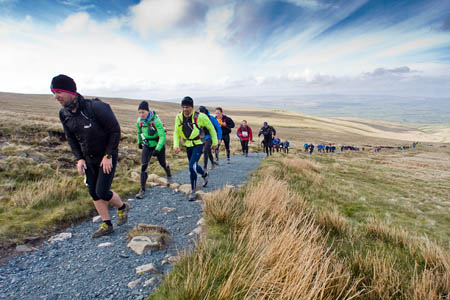
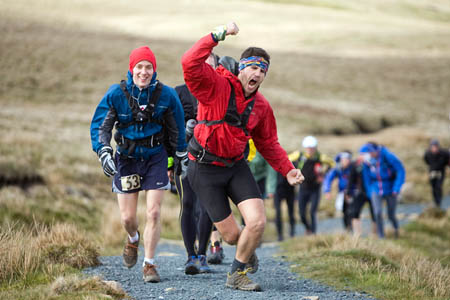
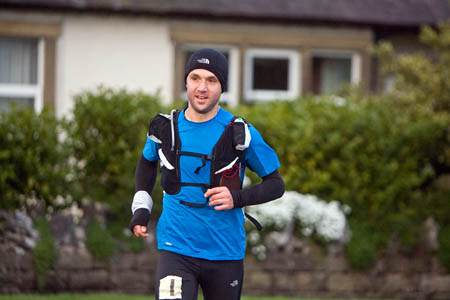
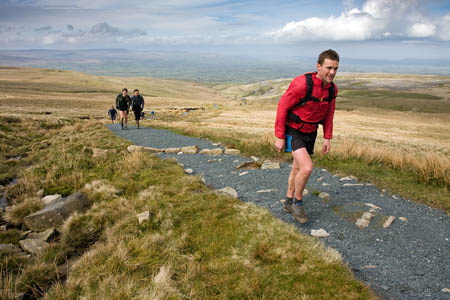
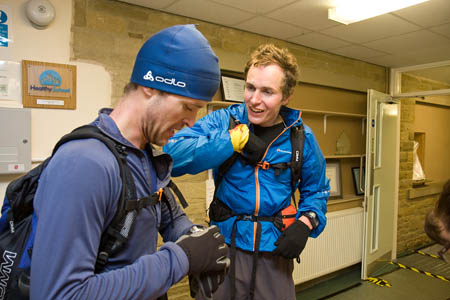
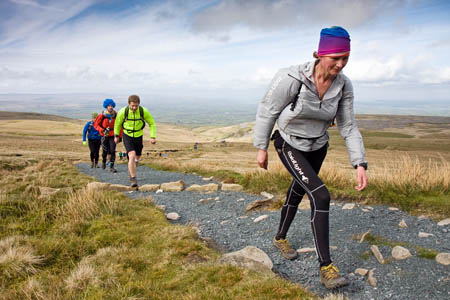
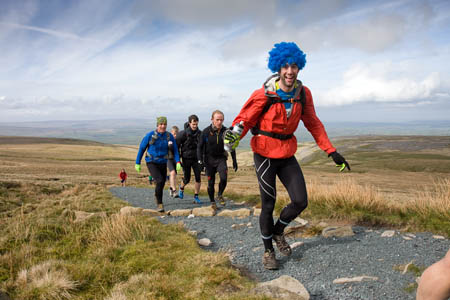
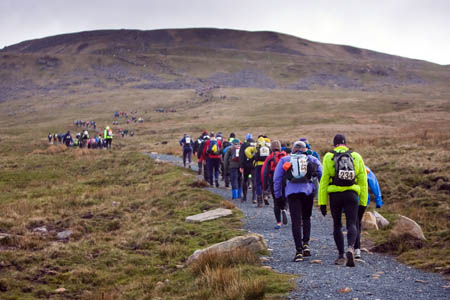
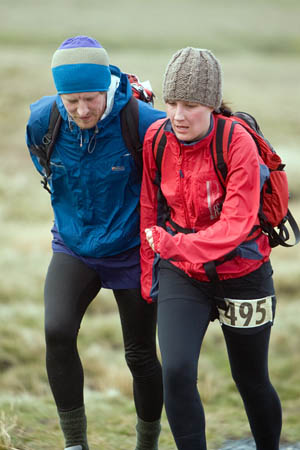
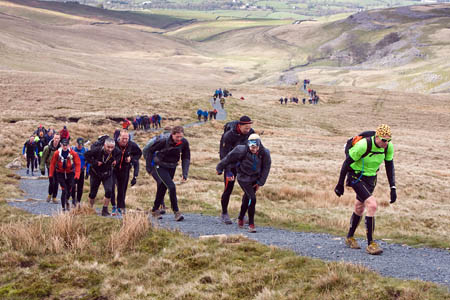
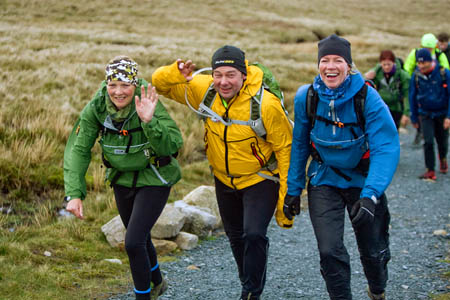
Martin
04 May 2012Without wishing to take sides or reopen old wounds, there's an interesting "contrast-and-compare" here with the OMM of a few years ago that attracted so much attention. I'll leave it to those better informed than I *Gets coat, makes brisk exit pursued by flying boots and other items of outdoor clothing....*
Craig
11 May 2012Good report, and good portrayal of the conditions. I was one of the 'lucky' ones to finish the event, but can say after doing this many times before, the hardest and worst conditions ever. The cold wind was relentless at the bottom as well as tops of hills. The strong gusts meants you ended up zig-zaging along as it blew you off-course.
Even though I had three layers of long sleved tops (two thermal) with hat and gloves, leggings and then waterproof top and bottoms over the top of all that, I was still cold! Thanks goodness I had all that kit with me to start with. I do sympathise with those that suffered or did not get to finish, but the weather on the fells takes no prisoners and the descisions made were the right ones.
John Dally
03 July 2012Best article I have read on this year's events. However, as someone with experience of over 30 Fellsmans, let me say that ground conditions were not as bad as feared and have on occasions been worse. The route is also now somewhat easier than a few years ago . The wind, however, was a different matter and I have never heard of entrants having eye trouble before.
In the circumstances, the decision to abandon was the correct one. However, by whatever means possible, it cannot be allowed to happen again as The Fellsman would be finished if it gained a reputation for non-completion.
My own thoughts are that, should conditions deteriorate so as to cause concern, checkpoint officials must ruthlessly exercise their powers to withdraw entrants whom they feel are, for whatever reason, unfit to deal with the situation.
I, along with five others, reached Cray around 3am. We were all in full gear and no one was in any real difficulty. Neither was anyone else on the bus that took us to Threshfield in difficulty.